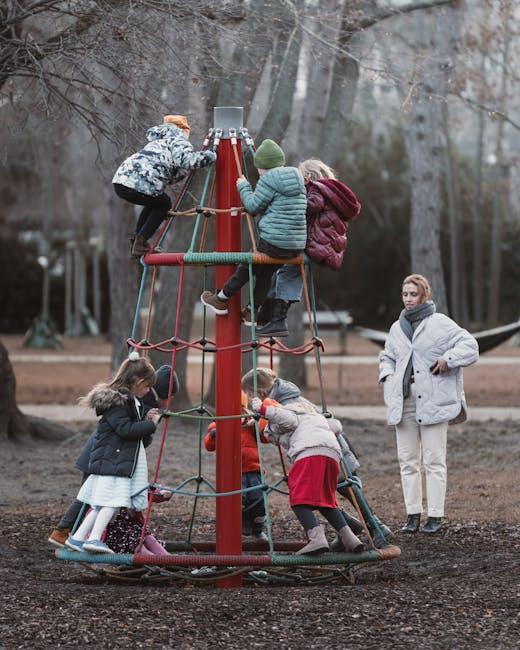Childhood is a time of boundless energy, unbridled curiosity, and playful exploration. As children embark on their daily adventures, the world transforms into a vast playground filled with endless possibilities. Yet, amidst the laughter and imaginative escapades, there lies an inherent vulnerability—the risk of injuries. While bumps and bruises are often part of growing up, ensuring a safe environment for children to play freely is crucial for their well-being and development. In this article, we delve into practical tips and thoughtful strategies to minimize the risk of childhood injuries during play. By blending safety with creativity, we can foster a nurturing environment where children can thrive, explore, and learn with confidence.
Creating Safe Play Environments
Ensuring that play spaces are free from potential hazards is crucial for the well-being of children. Regular maintenance is essential; inspect equipment for any wear and tear, such as rust or sharp edges, which could lead to injuries. Consider using soft surfaces like rubber mats or wood chips under play structures to cushion falls. It’s also important to have clear boundaries in place to prevent children from wandering into unsafe areas, such as roads or water bodies.
Creating a safe play environment also involves being mindful of the age-appropriateness of play equipment. Ensure that the toys and structures are suitable for the age group using them. In addition, having a first-aid kit readily accessible can be invaluable in case of minor accidents. Encourage supervised play, where an adult or responsible older child is present to oversee activities. By taking these precautions, you can create a safer environment that allows children to explore and enjoy their playtime with fewer risks.

Choosing Age-Appropriate Toys and Equipment
Ensuring that toys and equipment match a child’s developmental stage is crucial for safety. Young children are naturally curious, so selecting items that are free from small parts, sharp edges, and toxic materials is essential. Opt for toys that are labeled with age recommendations, as these are designed to align with a child’s cognitive and motor skills. Soft toys with secure stitching, large building blocks, and puzzles with big pieces are excellent choices for toddlers, while older kids might enjoy more complex construction sets or sports equipment that allows them to hone their skills safely.
Consider the environment where play occurs and choose equipment that complements it. For indoor play, padded mats and safety gates can prevent falls, while outdoor play areas should have impact-absorbing surfaces like rubber mulch or sand. When selecting bikes or scooters, ensure they come with protective gear such as helmets and knee pads. Remember, supervision is key; even the most age-appropriate toys require an attentive eye to minimize risks and maximize fun.

Supervision Strategies for Active Play
Ensuring safe and engaging environments for children during active play requires a combination of attentiveness and strategic planning. Active supervision is key, where adults not only watch over the play area but also interact and engage with the children. This means being close enough to anticipate potential hazards and intervene if necessary. Additionally, setting up play areas to allow clear sightlines can help supervisors monitor children effectively without obstructing their play.
Implementing specific strategies can further enhance safety during active play. Consider these approaches:
- Rotate supervision duties among adults to ensure fresh attention and alertness.
- Establish ground rules with the children that promote safe play, like no pushing or roughhousing.
- Conduct regular safety checks of play equipment and surroundings to identify and address potential risks.
- Encourage children to speak up if they feel unsafe or notice something dangerous.
By combining vigilance with interactive supervision, adults can create a play environment that not only minimizes risks but also enhances the fun and learning experiences for children.

Teaching Children Safe Play Practices
Instilling safe play habits in children can be both fun and educational. Begin by creating a designated play area where children know they can explore freely. This space should be free from sharp objects and potential hazards. Use brightly colored mats to define boundaries, making it easier for kids to understand their safe zone. Encourage teamwork and sharing by introducing games that require cooperation, teaching them the importance of looking out for each other.
Consider incorporating safety gear into their playtime routine. Whether they’re biking or skateboarding, having them wear helmets and knee pads can become a natural part of their activities. Educate them on the importance of listening to their bodies and taking breaks when tired. Additionally, emphasize the concept of respecting rules by establishing clear guidelines for different types of play, such as no pushing on the playground or staying within sight during outdoor activities. This not only keeps them safe but also helps in developing a sense of responsibility.








